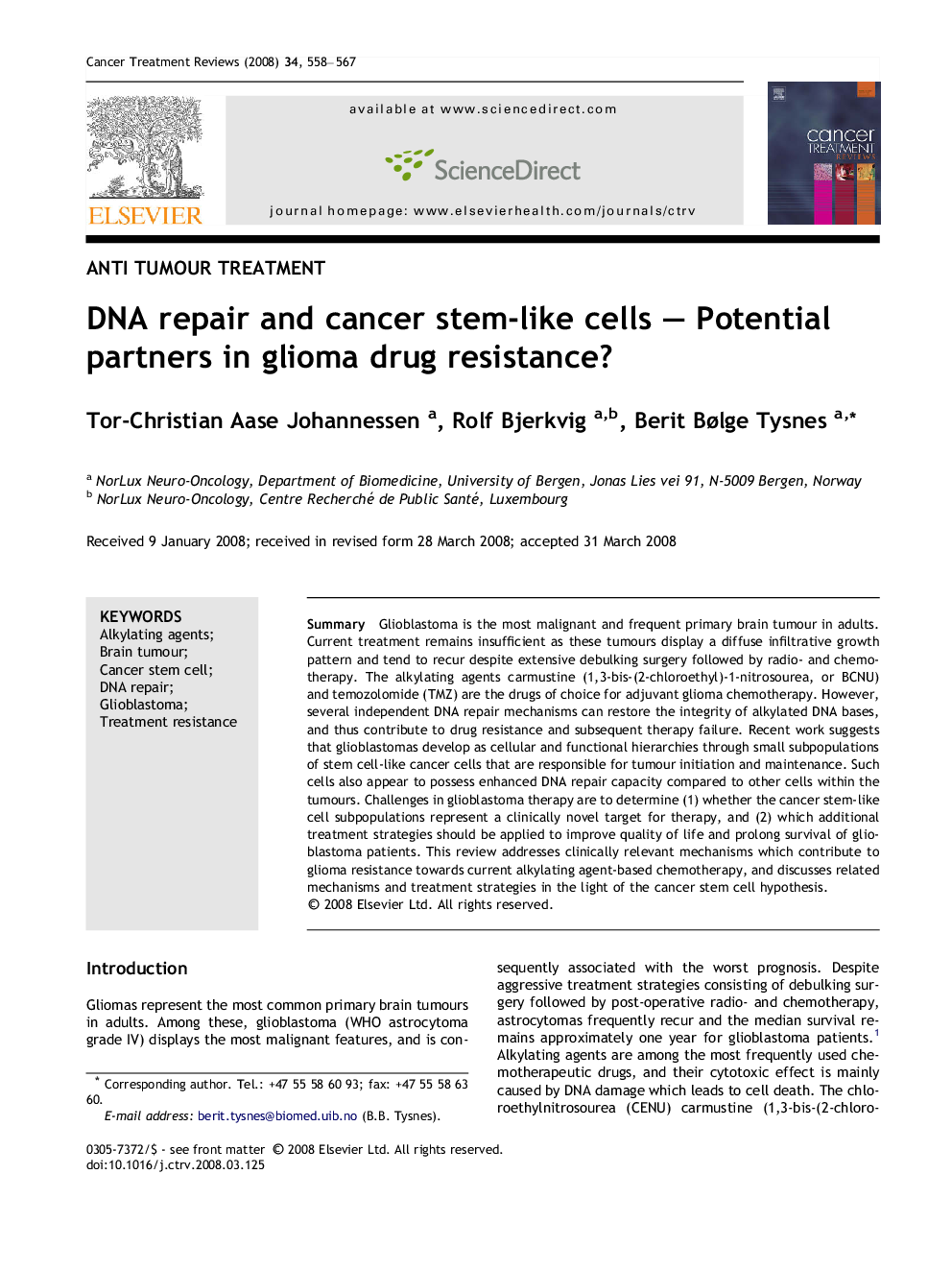| Article ID | Journal | Published Year | Pages | File Type |
|---|---|---|---|---|
| 3980668 | Cancer Treatment Reviews | 2008 | 10 Pages |
SummaryGlioblastoma is the most malignant and frequent primary brain tumour in adults. Current treatment remains insufficient as these tumours display a diffuse infiltrative growth pattern and tend to recur despite extensive debulking surgery followed by radio- and chemotherapy. The alkylating agents carmustine (1,3-bis-(2-chloroethyl)-1-nitrosourea, or BCNU) and temozolomide (TMZ) are the drugs of choice for adjuvant glioma chemotherapy. However, several independent DNA repair mechanisms can restore the integrity of alkylated DNA bases, and thus contribute to drug resistance and subsequent therapy failure. Recent work suggests that glioblastomas develop as cellular and functional hierarchies through small subpopulations of stem cell-like cancer cells that are responsible for tumour initiation and maintenance. Such cells also appear to possess enhanced DNA repair capacity compared to other cells within the tumours. Challenges in glioblastoma therapy are to determine (1) whether the cancer stem-like cell subpopulations represent a clinically novel target for therapy, and (2) which additional treatment strategies should be applied to improve quality of life and prolong survival of glioblastoma patients. This review addresses clinically relevant mechanisms which contribute to glioma resistance towards current alkylating agent-based chemotherapy, and discusses related mechanisms and treatment strategies in the light of the cancer stem cell hypothesis.
